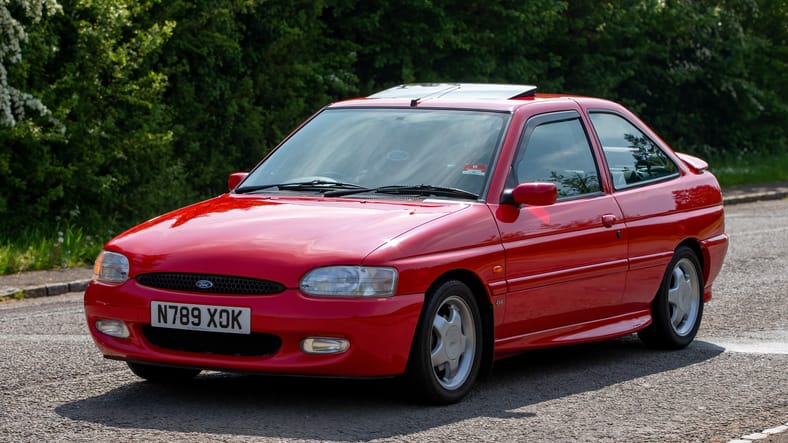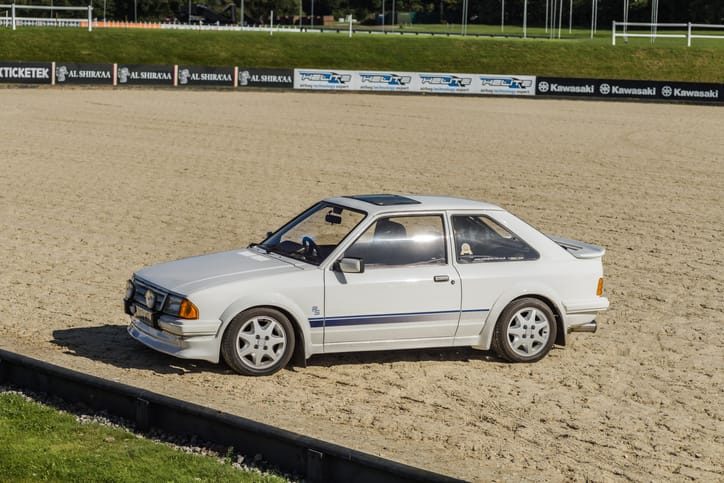The Ford Escort: A History of the American Compact Car

The Ford Escort holds a special place in automotive history, particularly in North America. Introduced in 1981, it became the first "world car" developed by Ford, signifying a new era of collaboration and platform sharing across the globe. The Escort served as a reliable and affordable compact car for over two decades, catering to a generation of drivers. This article delves into the rich history of the Ford Escort in North America, exploring its design evolution, performance variations, and lasting impact.
From Pinto to Escort: A New Era for Ford
Prior to the Escort, the Ford Pinto occupied the compact car segment in North America. However, the Pinto was plagued by safety concerns, leading to Ford's urgent need for a replacement. Enter the Escort in 1981, positioned as a more refined and fuel-efficient offering. This new car signified a significant shift for Ford, transitioning from rear-wheel drive to a front-wheel-drive platform, a trend that would dominate the industry in the years to come. The first-generation Escort (1981-1990) shared some components with the third-generation European Escort, highlighting Ford's global approach.

Generations of the Ford Escort
The North American Ford Escort can be categorized into three distinct generations:
- First Generation (1981-1990): Offered in sedan and hatchback body styles, the first-generation Escort was known for its practicality and affordability. It competed fiercely with other Japanese imports gaining popularity at the time. Early models came equipped with a 1.3L engine, but later iterations offered a 1.6L option for more power. The sporty GT trim, introduced in 1986, provided a more exciting driving experience with a fuel-injected 1.9L engine and sportier suspension.
- Second Generation (1991-1996): The second-generation Escort saw a significant design overhaul, adopting a more rounded and aerodynamic aesthetic. This generation also introduced a wagon body style, further expanding its appeal to families. Engine options continued with the 1.6L and 1.9L variants, with the GT model receiving a bump to a 2.0L engine. Safety features like airbags began to be incorporated during this generation, reflecting an evolving industry standard.
- Third Generation (1997-2003): The final generation of the North American Escort witnessed a major platform change. It was built on the Ford ZX2 platform, a sportier two-door coupe initially launched in 1998. This shift marked a clear focus on a more youthful and performance-oriented market. The base engine remained a 1.6L, but a powerful 2.0L Zetec engine was available in the ZX2 models, offering a thrilling driving experience. The final year of production, 2003, saw the Escort phased out in favor of the Ford Focus, another world car designed to replace the Escort and its global counterparts.
Beyond the Engine: Trims and Special Editions
The Ford Escort offered a variety of trims and special editions throughout its production run, catering to diverse customer preferences. Here are some noteworthy examples:
- LX: The base trim prioritizing affordability and practicality.
- GL: Offered a step up in comfort and features compared to the LX.
- SE: Introduced a sportier aesthetic and handling for a more engaging driving experience.
- ZX2: A two-door coupe focused on performance and a younger demographic.
- GT: The high-performance trim across generations, offering more powerful engines and sportier suspension.
Special editions like the S and SE Sport added unique visual enhancements and features, keeping the Escort lineup fresh and appealing to various buyer segments.

The Legacy of the Ford Escort
The Ford Escort's impact on the automotive landscape is undeniable. It served as a reliable and affordable transportation option for millions of drivers, establishing itself as a staple in the compact car segment. The Escort's focus on fuel efficiency resonated with a generation becoming increasingly environmentally conscious. Furthermore, the introduction of the world car concept by Ford paved the way for more collaborative car development, optimizing resources and production on a global scale.
The Escort's legacy lives on in the hearts of many drivers who cherish its practicality, affordability, and for some, a touch of youthful driving excitement. While its production ceased in 2003, the Ford Escort remains a significant chapter in American automotive history, influencing the design and development of compact cars for years to come.
